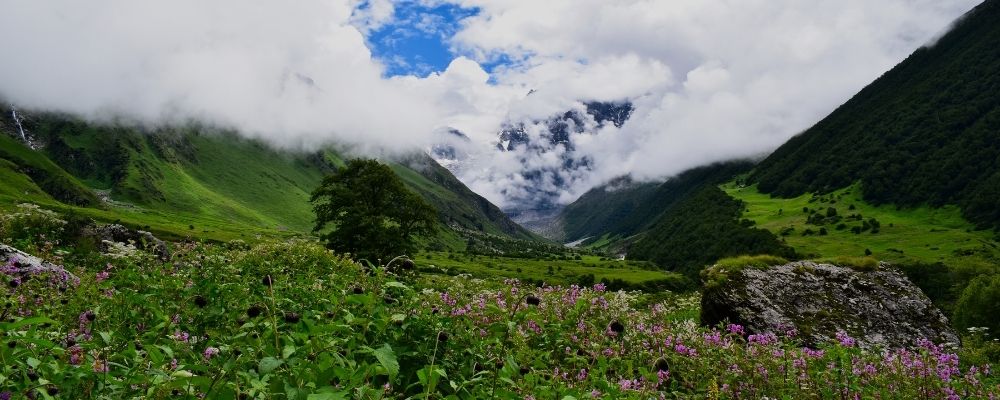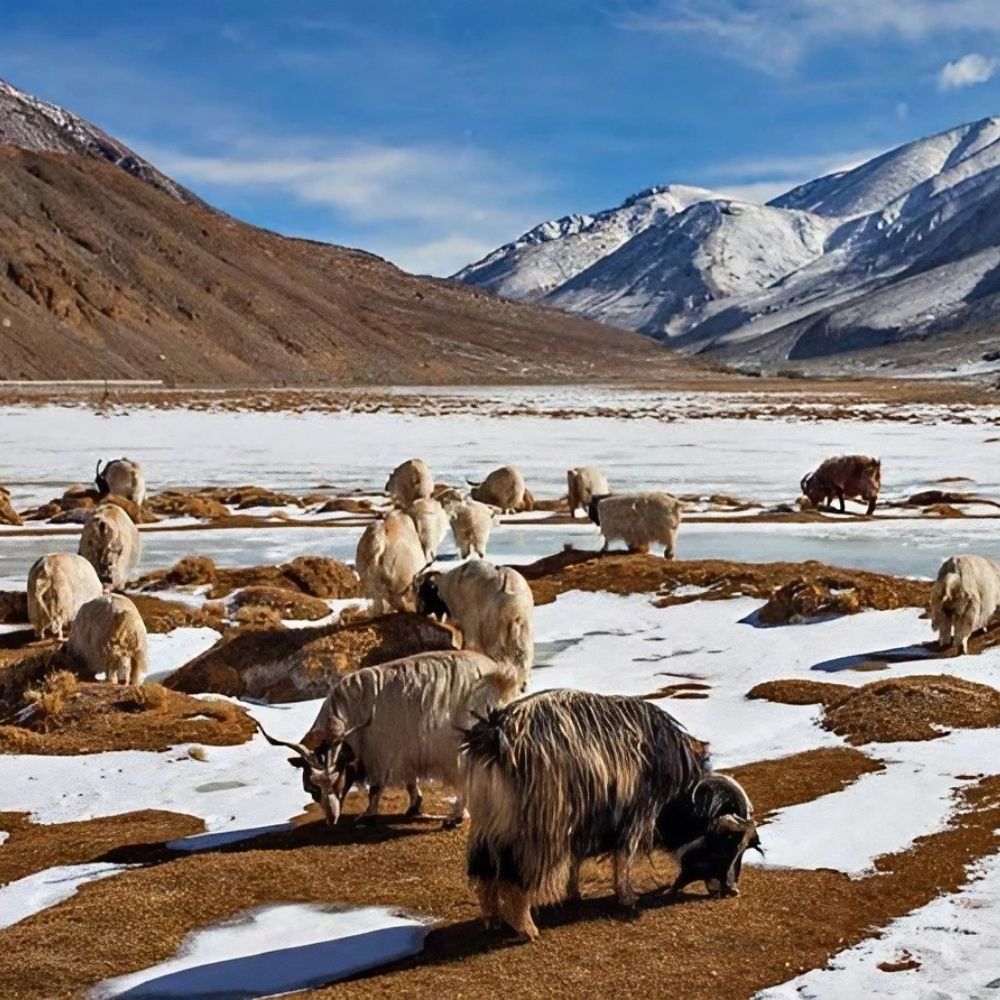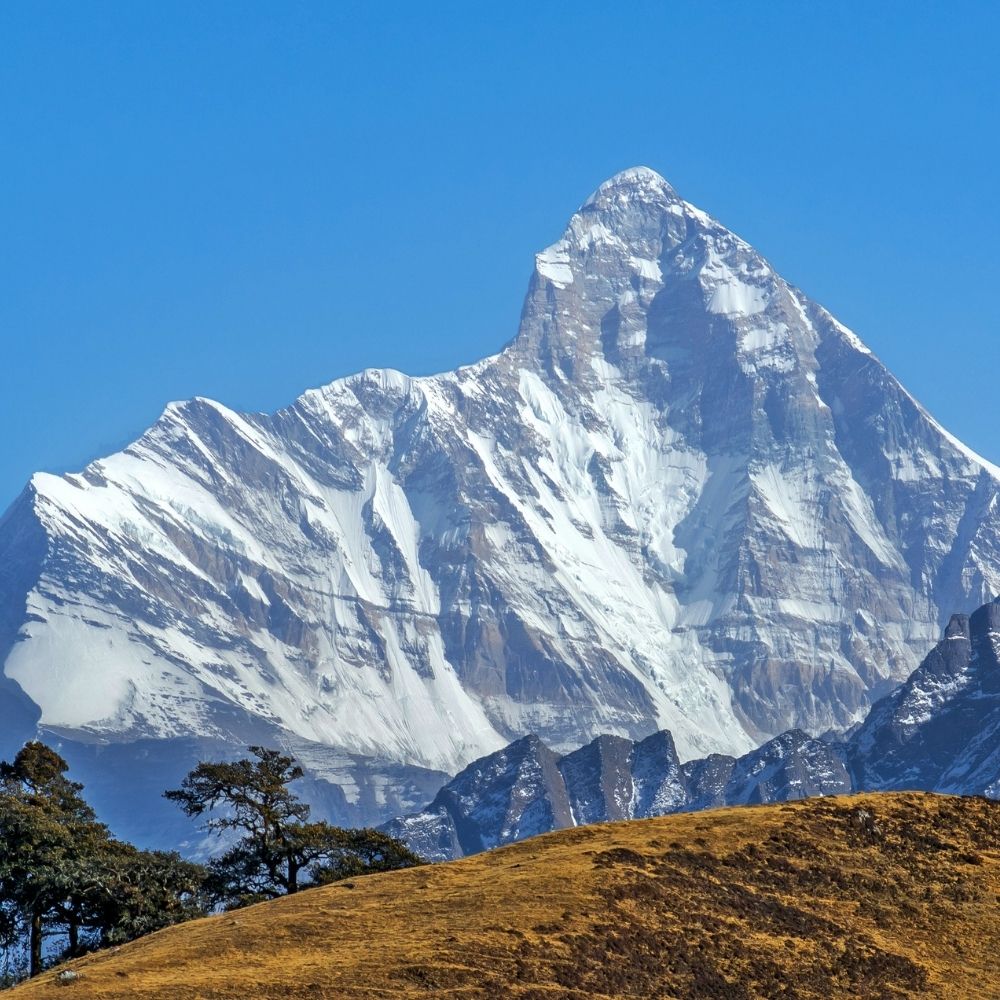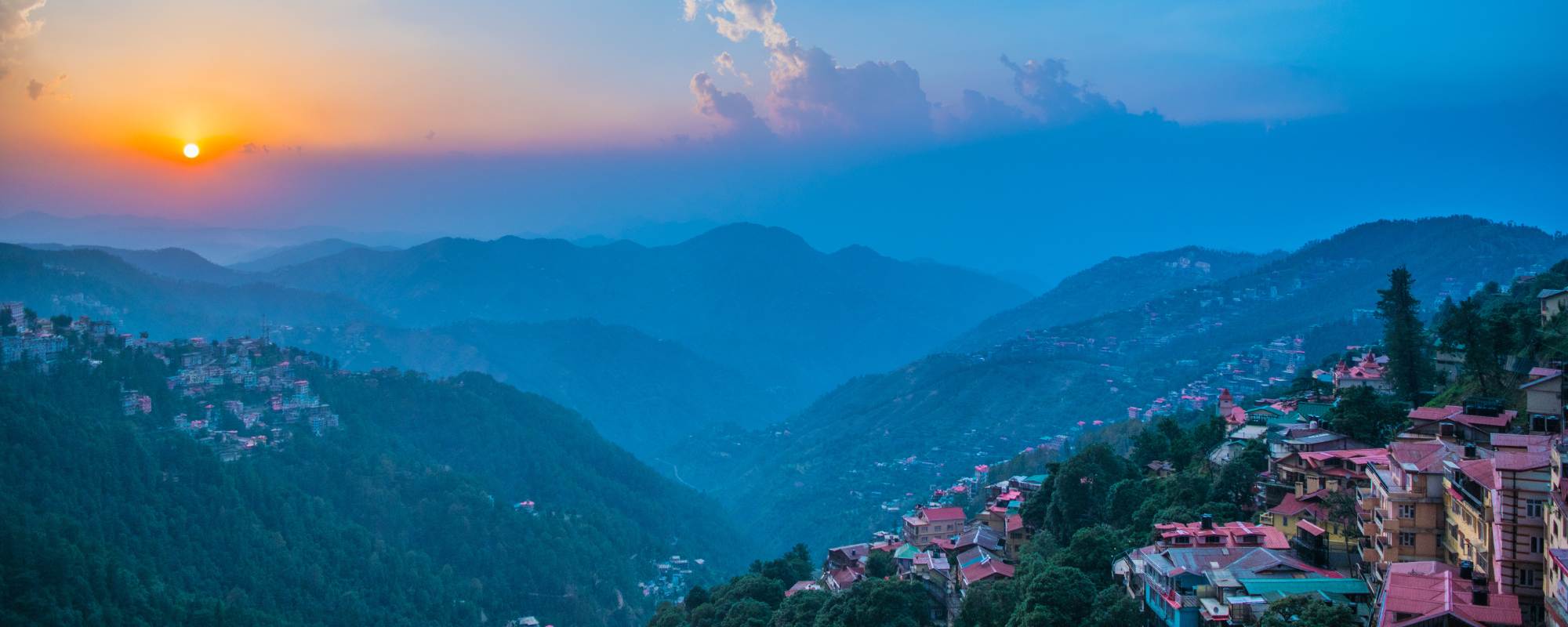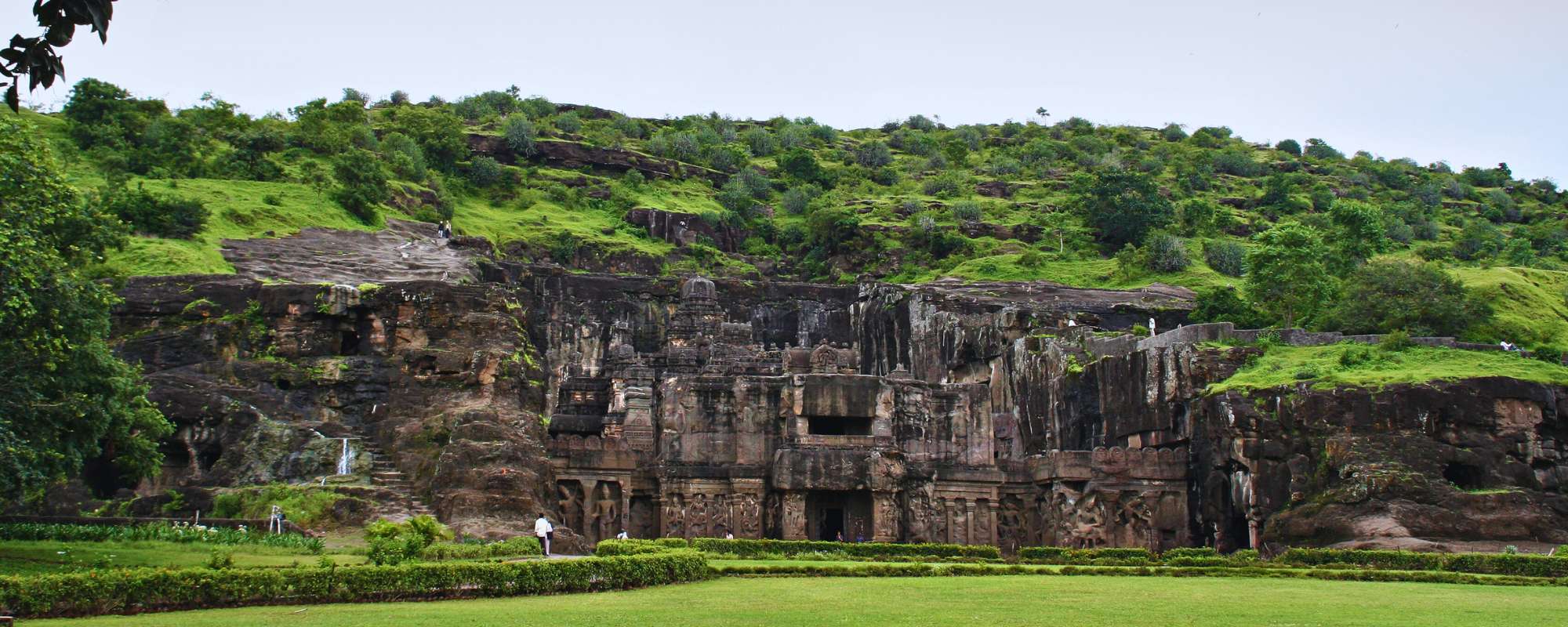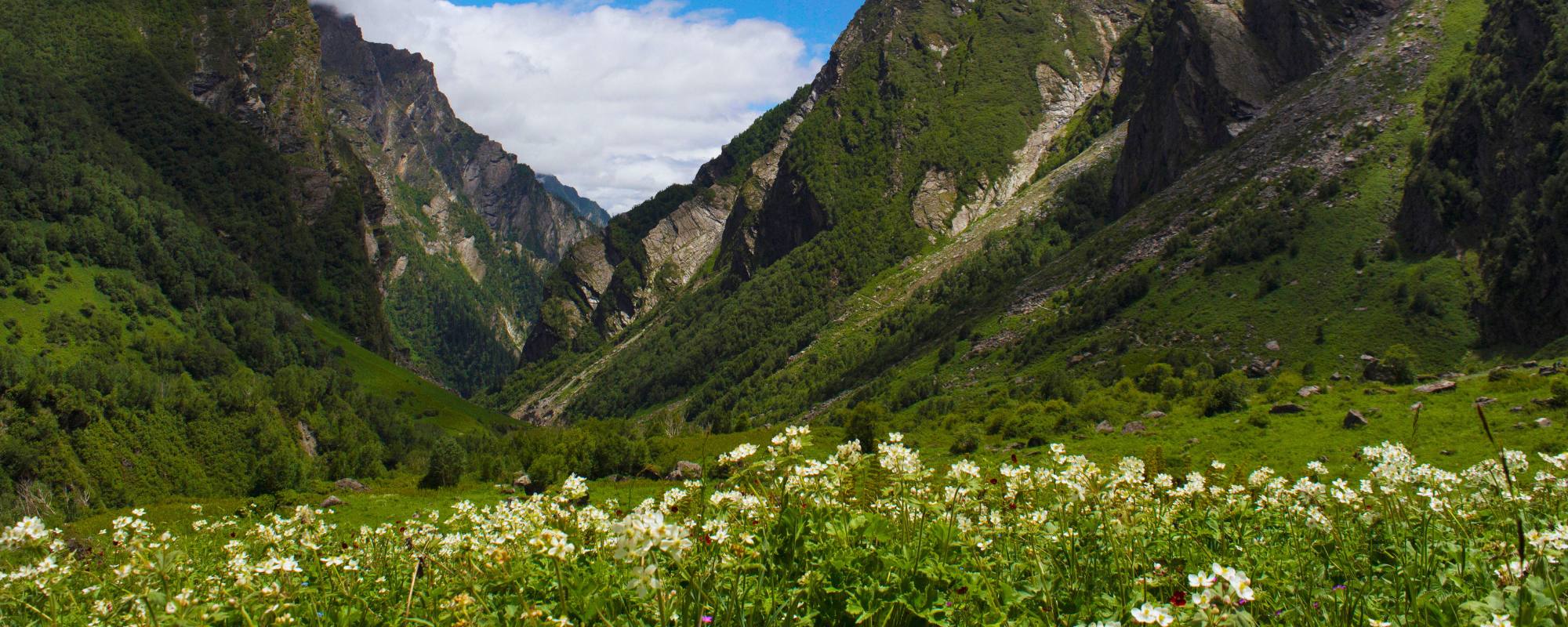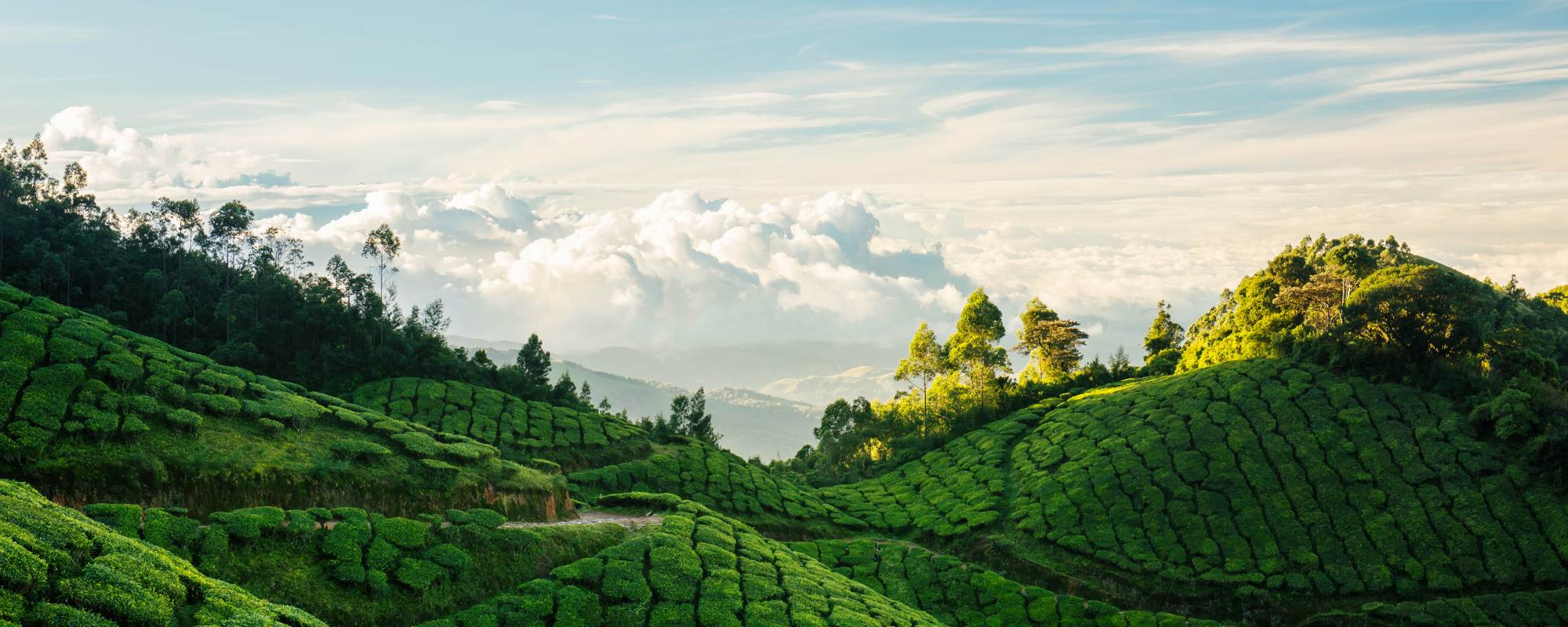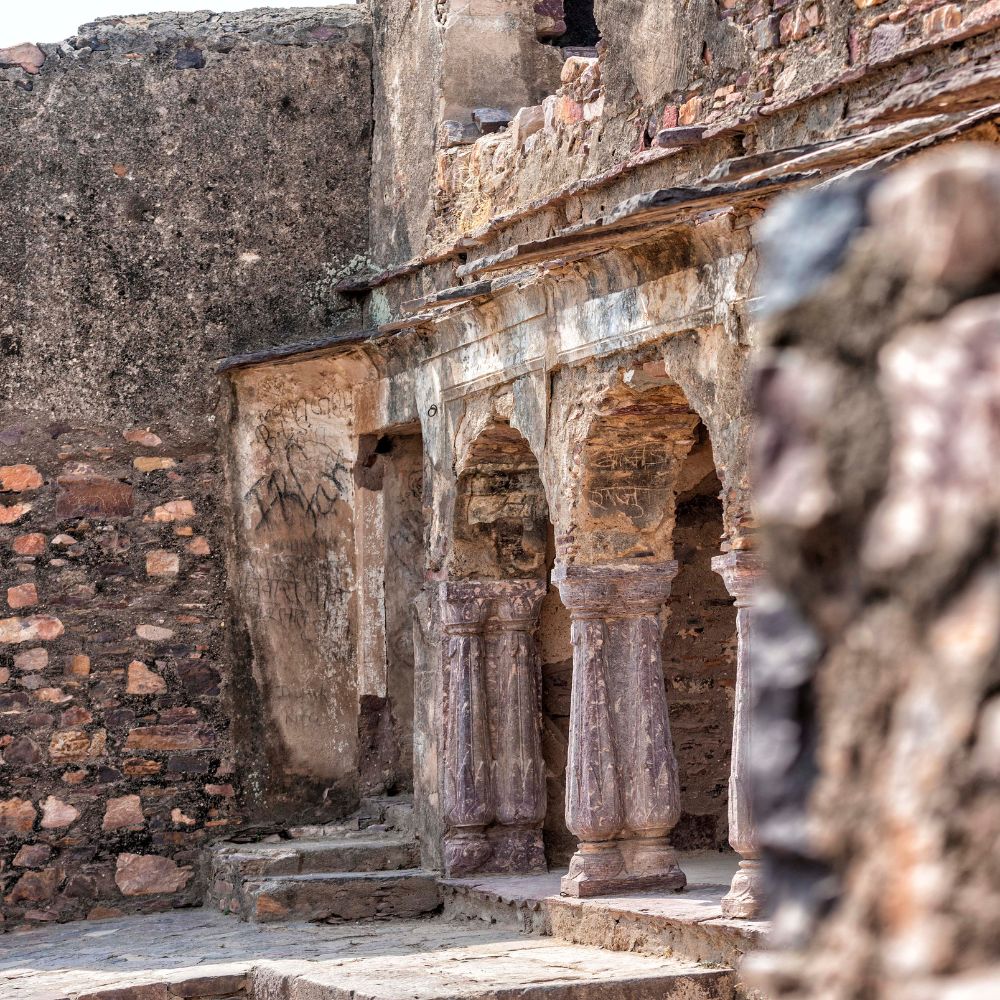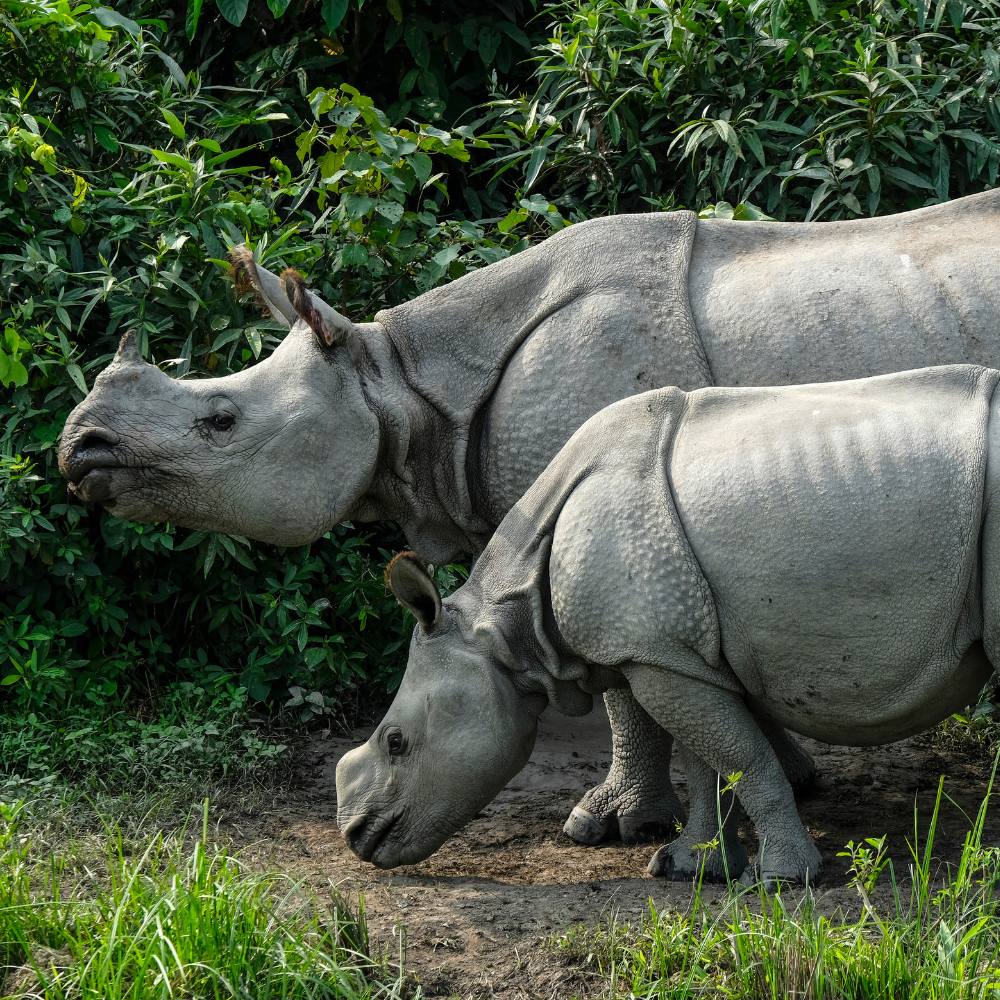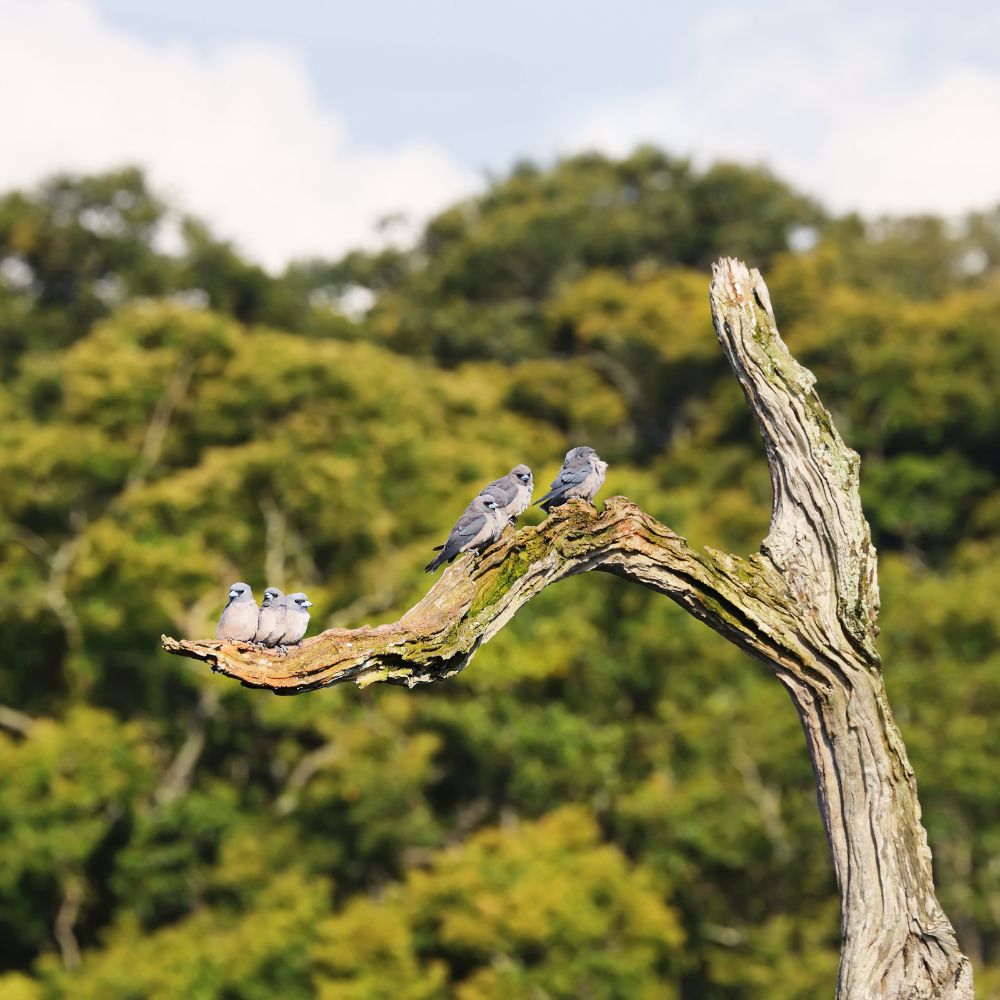The Himalayan region is a paradise for nature enthusiasts, adventurers, and anyone seeking solace in embracing untouched wilderness. Amidst this breathtaking landscape, you'll discover an array of national parks, each with unique charm and ecological significance.
The Indian Himalayan region is more than just a landlocked territory; it is a vast and ecologically diverse expanse that extends from the Indus Valley in Kashmir to the Noha-Dihing River valley in Arunachal Pradesh. This region serves as the habitat for numerous endangered animals, migratory birds, a variety of insects, and a rich tapestry of plant species. Encircled by towering peaks, this part of the Indian Himalayas boasts multiple national parks, serving as sanctuaries for the unique and precious wildlife that call this region home.
In this article, we embark on a journey to explore the best national parks of the Himalayas, where nature's grandeur reigns supreme.
1. Hemis National Park

- Location and overview
In the Ladakh region, Hemis National Park is a realm of high-altitude deserts, craggy mountains, and elusive wildlife. This park spread over 4,400 square kilometers, offers a striking contrast to the rest of the world. Hemis is known for its rugged terrain, arid landscapes, and the charismatic snow leopard, which stalks its rocky expanses.
- Unique wildlife and biodiversity
Hemis is a true wildlife sanctuary, harbouring species such as the snow leopard, Tibetan wolf, Eurasian brown bear, and various ungulates. The park's biodiversity extends beyond mammals, with many avian species and endemic flora that thrive in the harsh Himalayan conditions.
- The elusive snow leopard
Hemis National Park is renowned for its role in snow leopard conservation. This elusive and magnificent cat, the ghost of the mountains, finds its home amidst Hemis's rocky slopes and deep ravines. Seeing one of these elusive cats in the wild is an experience of a lifetime for wildlife enthusiasts.
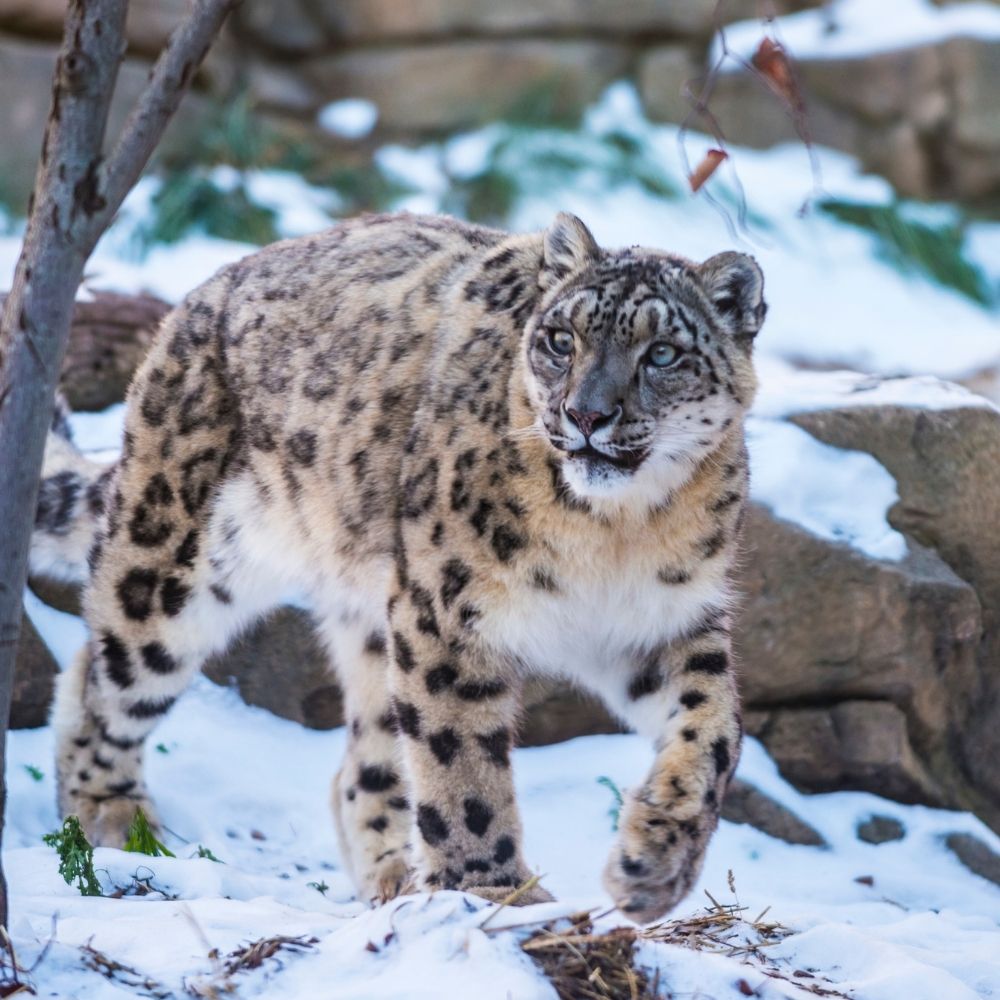
- Best Time to Visit Hemis National Park:
Plan your visit between June and September to witness the park's diverse wildlife. During this period, the weather is favourable, providing an excellent opportunity for wildlife sightings.
- How to Reach:
The nearest airport is Kushok Bakula Rimpochee Airport in Leh. From Leh, you can hire a taxi or take a bus to reach Hemis.
2. The Great Himalayan National Park

The Great Himalayan National Park is a UNESCO World Heritage Site in the stunning state of Himachal Pradesh. The park boasts a landscape characterized by lush green valleys, dense forests, and rugged mountains, making it a magnet for those seeking unspoiled natural beauty.
- Flora and fauna diversity
The park is a treasure chest of biodiversity, with various fauna, including the Himalayan tahr, musk deer, and numerous bird species. The park's pristine forests house a diverse range of flora, some of which are rare and endemic.
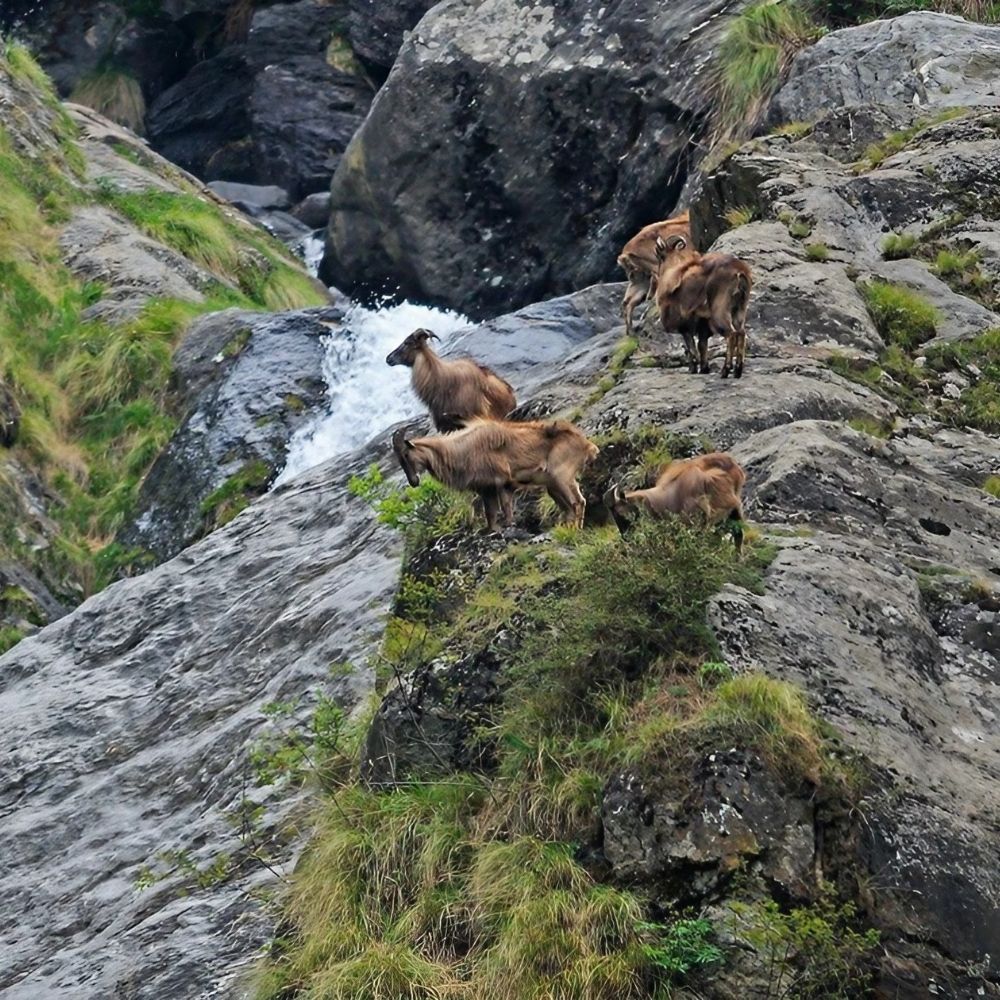
- The ethereal Tirthan Valley
Within the boundaries of the Great Himalayan National Park lies the enchanting Tirthan Valley, a haven for trout fishing, bird watching, and leisurely walks along the riverbanks. The valley's tranquillity and lush landscapes make it a dream destination for nature lovers.
- Adventure and trekking opportunities
For adventure seekers, Great Himalayn National Park offers trekking routes that wind through dense forests, leading to high-altitude meadows and pristine glacial lakes. The treks here offer a unique chance to connect with nature and challenge your adventurous spirit.
- How to Reach:
The nearest airport is Bhuntar Airport in Kullu. You can also reach by road from Manali or Shimla. Aut, a town on the Chandigarh–Manali highway, is the closest major bus stand.
- Best Time to Visit The Great Himalayan National Park:
Plan your visit between May to June and September to November. During these months, the weather is pleasant, and the biodiversity of the park is at its peak.
3. Valley of Flowers National Park
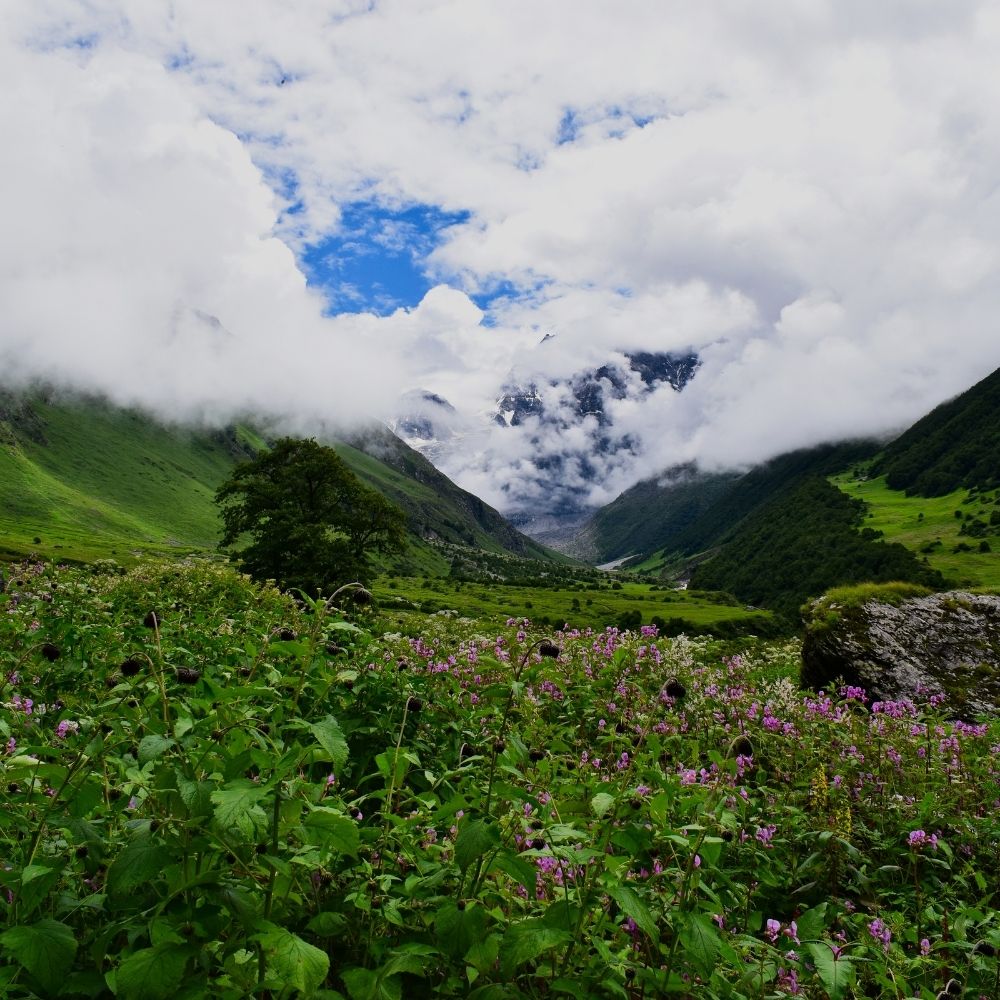
A true jewel in the crown of the Himalayas, the Valley of Flowers National Park is a UNESCO World Heritage Site, celebrated for its stunning alpine meadows and the myriad of wildflowers that burst into bloom during the monsoon season.
- A burst of vibrant blooms
When the monsoon arrives, the valley transforms into a riot of colours. Thousands of wildflowers, including the elusive blue poppy, paint the landscape with their vibrant hues, creating an otherworldly spectacle.
- Rare and endangered species
Apart from the floral spectacle, the national park is also home to several endangered animals, such as the Asiatic black bear, red fox, and the elusive snow leopard. Birdwatchers are in for a treat with many avian species that grace the park's skies.
- The mythological connection
The Valley of Flowers is not just a place of natural wonder but also one of mythology and spirituality. It's believed to be the place where Lord Hanuman collected the Sanjeevani herb during the epic battle in the Ramayana, adding to the park's cultural significance.
- The Best Time To Visit Valley of Flowers National Park:
Plan your visit between July and August to witness the valley in full bloom. The weather during this period is pleasant, and the landscapes are at their most glorious.
- How to Reach
The nearest airport is Jolly Grant Airport in Dehradun. Govindghat serves as the starting point for the trek to Valley of Flowers, and it can be reached by road from Haridwar.
4. Khangchendzonga National Park
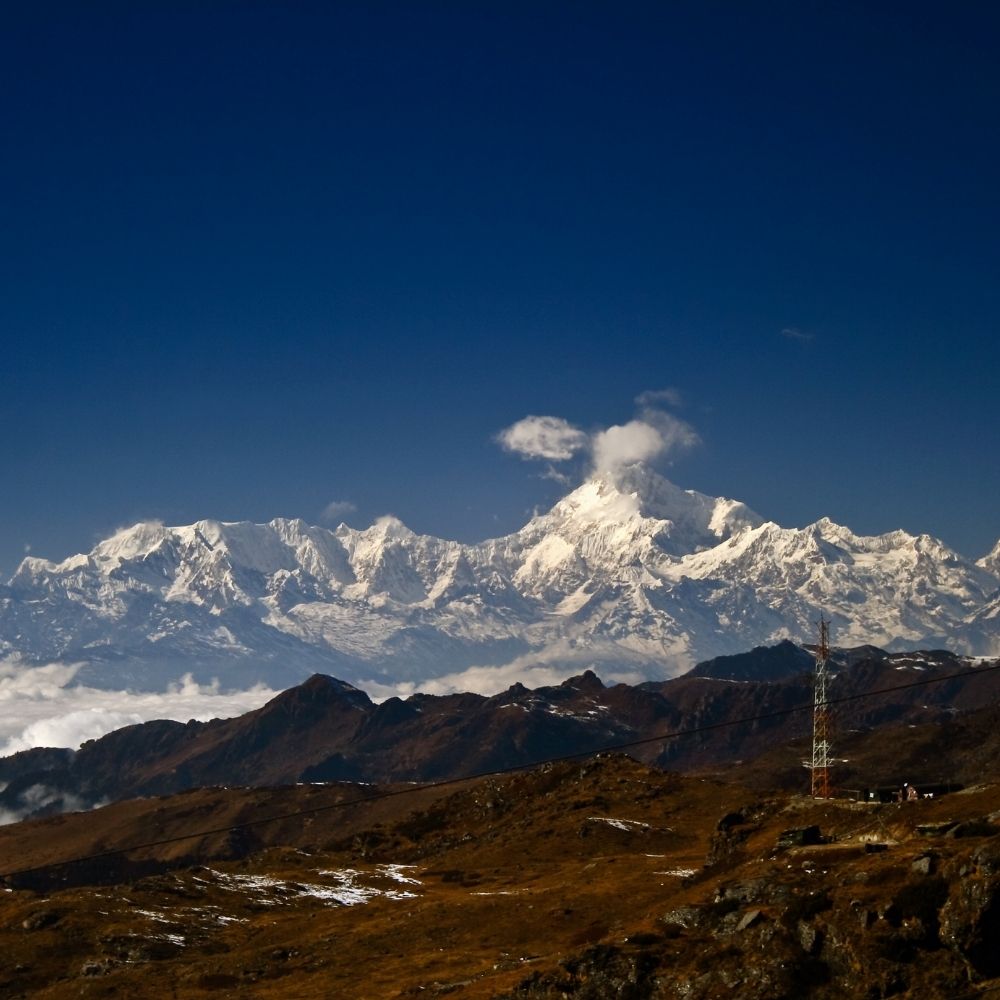
Khangchendzonga National Park, cradled in the state of Sikkim, is named after the third-highest mountain in the world, Mount Khangchendzonga. This national park is a haven for biodiversity and a sacred landscape revered by the indigenous communities.
- Magnificent Kanchenjunga peak
The park offers breathtaking views of the towering Kanchenjunga, which leaves visitors in awe. The mountain is not just a physical presence but a spiritual entity deeply ingrained in the culture and beliefs of the local communities.
- Biodiversity hotspot
Khangchendzonga National Park is a UNESCO World Heritage Site recognized for its rich biodiversity. The park is home to red pandas, Himalayan tahr, and the elusive snow leopard, among other species. Rare orchids and medicinal plants also thrive in this pristine environment.
- Trails and treks for adventurers
For adventure enthusiasts, the park offers a network of trails that lead through alpine meadows, rhododendron forests, and high mountain passes. The Goechala trek is particularly renowned for its panoramic views of Kanchenjunga.
- Best Time to Visit Khangchendzonga National Park:
Plan your visit between April to June and September to November. During these months, the weather is favorable, and the majestic peaks of Khangchendzonga are clearly visible.
- How to Reach:
The nearest airport is Bagdogra Airport. To reach Yuksom, the gateway to the park, you can take a taxi or bus from Siliguri or Gangtok.
5. Namdapha National Park

Tucked away in the eastern reaches of India, Namdapha National Park is a hidden gem in Arunachal Pradesh. Known for its dense forests, diverse wildlife, and unique ecosystems, this park remains an off-the-beaten-path destination for intrepid travellers.
- Diverse and unique ecosystem
Namdapha is a hotspot of biodiversity, housing species not found anywhere else in the world. The park's diverse ecosystems range from lowland evergreen forests to high-altitude meadows, creating a mosaic of habitats for various flora and fauna.
- Iconic species: Hoolock Gibbons
One of the highlights of Namdapha is the presence of the western hoolock gibbons, India's only ape species. The haunting calls of these primates reverberate through the jungle, adding to the park's mystical aura.
- Challenges of accessibility
Getting to Namdapha National Park is an adventure with rugged terrains and limited infrastructure. However, the rewards are boundless for those willing to make the journey, offering an immersive experience in nature.
- Indigenous communities and conservation
Namdapha is not just a wildlife sanctuary; it's also home to diverse indigenous communities. The park's management actively involves these communities in conservation efforts, recognizing the symbiotic relationship between people and nature.
- How to Reach:
The nearest airport is Dibrugarh Airport in Assam. From Dibrugarh, you can reach Miao, the entry point to Namdapha, by road.
- Best Time to Visit Namdapha National Park:
Plan your visit between October and March to experience the park's diverse flora and fauna. The weather is cool and comfortable during this period.
6. Nanda Devi National Park
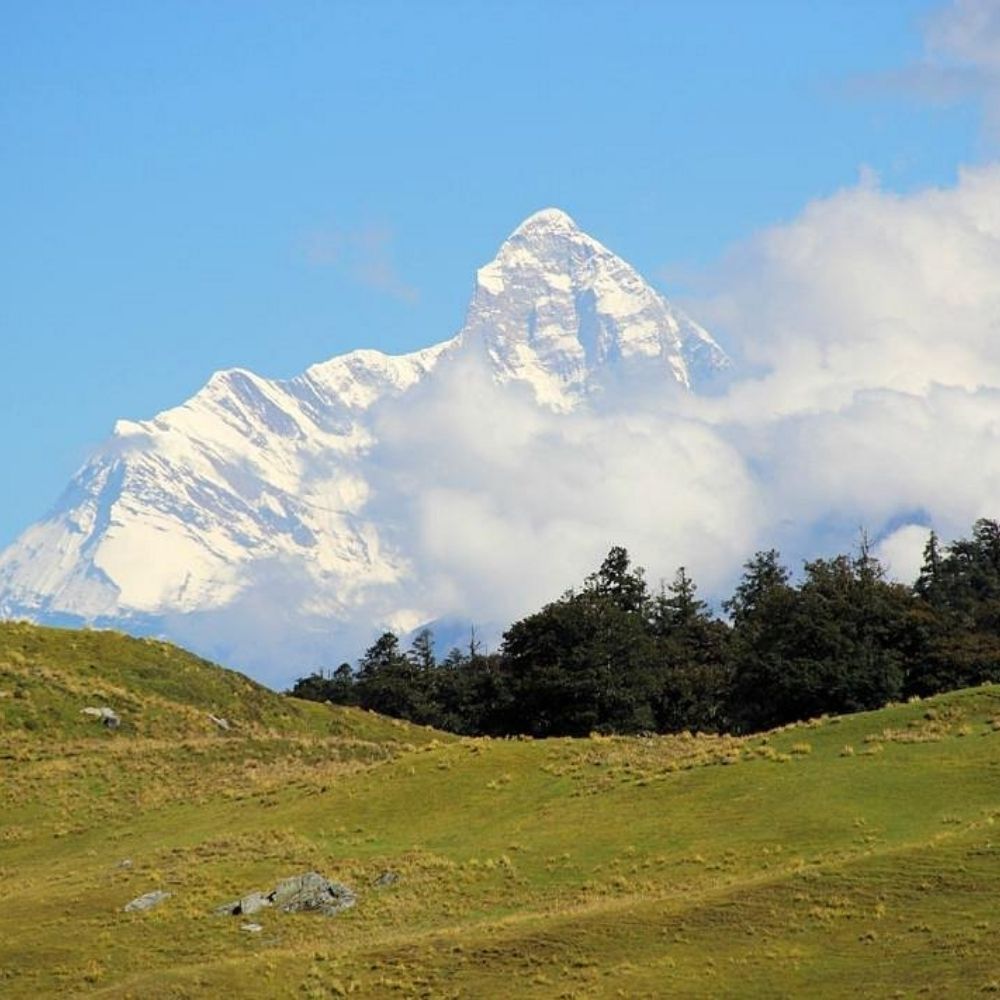
Nanda Devi National Park is an alpine flora and fauna sanctuary in the Garhwal Himalayas. The park, named after the towering Nanda Devi peak, is a UNESCO World Heritage Site and Biosphere Reserve, preserving the region's fragile ecosystems.
- Nanda Devi Biosphere Reserve
The park is part of the larger Nanda Devi Biosphere Reserve, a unique and fragile ecosystem that includes the outer and inner sanctuary. The reserve is a testament to the diverse habitats found in the Garhwal region, from dense forests to high-altitude meadows.
- Rare high-altitude flora
Nanda Devi National Park has various high-altitude flora, including rare species like the Brahma Kamal. The park's landscapes are adorned with colourful blooms during the summer months, creating a mesmerizing spectacle.
- Exploration and trekking options
For adventurers, the park offers various trekking routes that lead to the Nanda Devi base camp and beyond. These treks allow one to explore the park's pristine landscapes, encounter rare wildlife, and witness breathtaking views of the surrounding peaks.
- Best Time to Visit Nanda Devi National Park:
Plan your visit between May to June and September to October. During these months, the weather is pleasant, offering clear views of the Nanda Devi peak and the surrounding landscapes.
- How to Reach:
The nearest airport is Jolly Grant Airport in Dehradun. You can reach the park by road from Joshimath, which is well-connected to major cities in Uttarakhand.
Safety precautions for high-altitude treks
The Himalayas present challenges, especially during high-altitude treks. Prioritize safety by acclimatizing, carrying essential gear, and being aware of weather conditions.
As visitors, you must tread lightly and leave no trace. Engage in ethical tourism practices to preserve these pristine landscapes for generations.
Conclusion
In the heart of the Himalayas, these national parks stand as guardians of biodiversity, cultural heritage, and adventure.
As we conclude our journey through the peaks and valleys, let the allure of the Himalayan national parks inspire you to explore this majestic region. Conservation, cultural appreciation, and responsible tourism will ensure that the splendour of the Himalayas endures, inviting generations to come to revel in its natural wonders.
